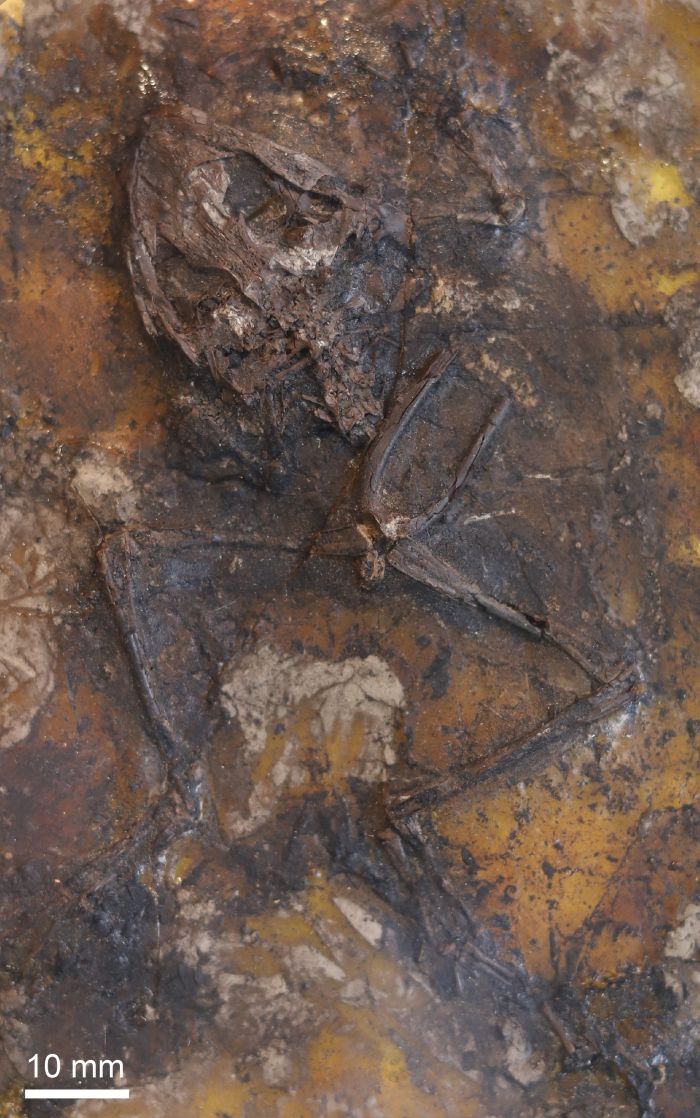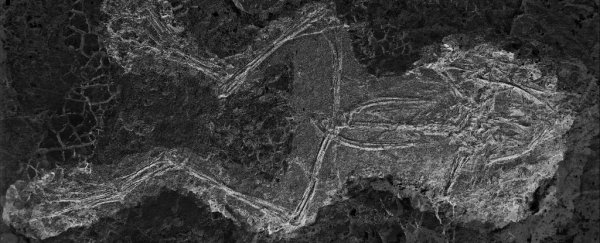If you want to lure a bunch of prehistoric frogs to a sticky end, the best way is the promise of amphibian hanky-panky.
That's the conclusion paleontologists have arrived at after studying the remains of hundreds of ancient frogs that died in a swamp around 45 million years ago, in what we now know as Germany.
The findings offer a neat solution to the mystery of why the frogs died, which has been something of a puzzle since they were discovered in the fossil bed decades ago.
"As far as we can tell, the fossil frogs were healthy when they died, and the bones don't show any signs of predators or scavengers – there's also no evidence that they were washed in during floods, or died because the swamp dried up," says paleontologist Daniel Falk of University College Cork in Ireland.
"By process of elimination, the only explanation that makes sense is that they died during mating."
The fossil bed in which the frogs were discovered is one of the most exceptional fossil sites in the world.
It's found in Geiseltal, in what was once a coalfield from which lignite was mined as a fossil fuel. Lignite, a sedimentary deposit, is also incredible at preserving ancient remains.
Over 50,000 fossils have been retrieved from Geiseltal, including small mammals, bats, birds, crocodiles, reptiles, and fish, sometimes even with soft tissues and organs preserved.
And, of course, there are frogs. Lots and lots of frogs. This is a problem – because the layer in which the frogs were found was a swampy subtropical forest, in the Middle Eocene, just under 50 million years ago.
You might be thinking, "So what? Lots of frogs live in wet conditions!" But lots of other frogs don't, and most of the frogs identifiable in the Geiseltal lignite seem to belong to this latter category. Painstaking work by Falk and his colleagues categorized most of these frogs as belonging to the Pelobatidae family.
A single genus of these frogs lives today, and it is not aquatic. It lives on dry land, returning to the water only for the mating season. This can be quite a perilous endeavor for the frogs – at least for females, who can quite literally suffocate under the attention of ardent admirers.
 The skeleton of a frog that likely died after mating, and broke in half in water currents. (D. Falk)
The skeleton of a frog that likely died after mating, and broke in half in water currents. (D. Falk)
"Female frogs are at higher risk of drowning as they are often submerged by one or more males – this often happens in species that engage in mating congregations during the short explosive breeding season," says paleontologist Maria McNamara of University College Cork.
This may seem counterintuitive, and not particularly conducive to successful mating, but it's not necessarily a problem in the world of frogs.
One species of modern frog, the Amazonian Rhinella proboscidea, can extract eggs from a deceased female by squeezing her, and can then successfully fertilize the eggs. This hasn't been observed in modern Pelobatidae, but it's not entirely outside the realm of possibility.
At any rate, the new analysis can help us understand frog evolution through the ages, and to contextualize ancient fossil frog beds.
"What's really interesting is that fossil frogs from other sites also show these features, suggesting that the mating behaviors of modern frogs are really quite ancient and have been in place for at least 45 million years," McNamara says.
The research has been published in Papers in Palaeontology.
